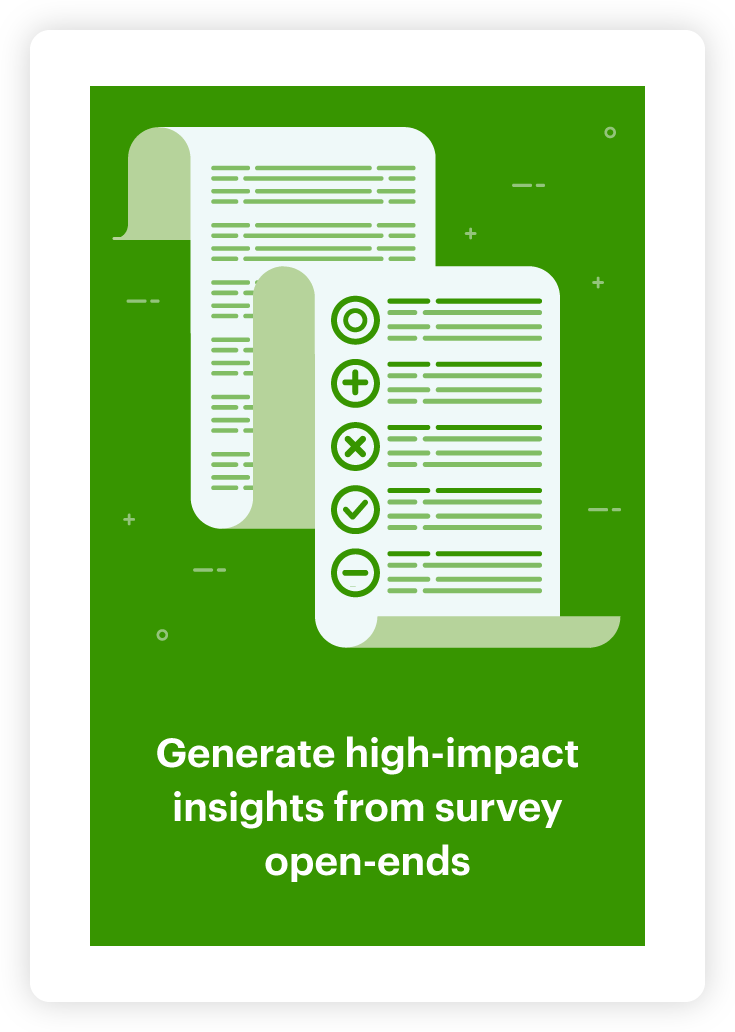A cell phone company’s customer satisfaction survey analysis conundrum


Black Friday and Cyber Monday 2023 generated record spending in the US. A vital component for brands seeking to make a success of the discount days is selecting the right products to promote. There are multiple methods they can use to inform their decision making — including customer satisfaction survey analysis.
Despite customer satisfaction (CSAT) scoring becoming a universal metric among customer teams, customer feedback analysis is often overlooked until senior stakeholders want explanations. While CSAT scores provide an ongoing overview of what buyers think, analyzing qualitative feedback shows why they think it.
Customer responses provide vital business intelligence across organizations, including the products companies look to promote in key periods. However, doing this type of CSAT survey analysis quickly and at scale requires the right software.
Relative Insight’s customer satisfaction survey analysis tool enables organizations to get to the why behind the what in minutes. This efficiency is vital not only for customer teams seeking to save time and resources — it enables companies to resolve problems much faster. This was true for a cell phone brand that uses Relative Insight for customer feedback analysis.
It harnessed a variety of data sources to determine what products it would discount for Black Friday-Cyber Monday, including CSAT scores and feedback. However, just as the company was finalizing a discounting decision on a particular phone, the product’s CSAT score fell precipitously.
In this example illustrating how to analyze customer satisfaction survey data effectively, the organization used Relative Insight to understand the reasons behind the fall — and implement changes to ensure its discounting plan continued on schedule.
Identifying why a device’s CSAT score plummeted
The organization considered many factors when choosing which devices to discount. While target consumer base, stock availability and other considerations formed part of its decision making, it was vital that a device discounted for Black Friday-Cyber Monday was recommended by customers already using it.
The firm regularly surveys segments of customers that purchase its devices. This particular model regularly scores above the company’s CSAT score benchmark, suggesting it would be an ideal promotional product.
As part of its customer feedback program, the cell phone maker uses Relative Insight’s software to compare free text responses week on week. This combination of CSAT scores and qualitative customer satisfaction survey analysis enables the team to quickly identify and track what’s behind score fluctuations.
After the phone’s CSAT score fell, the customer team compared consumers’ responses from the prior week’s survey and the latest questionnaire. Unsurprisingly, the first survey featured words related to ‘contentment’ 12.9x more, such as ‘satisfied’ and ‘happy’. Customers were also 6.2x more likely to describe the phone as ‘user friendly’.
However, when conducting feedback analysis on the latest survey, words relating to ‘frustration’ overindexed 13.6x more. Respondents were also infinitely more likely to use language aligned to ‘disappointment’, indicating this emotion didn’t appear in the previous survey.
Further analysis identified what irked customers. They were 37.1x more likely to use the words ‘freeze’, ‘freezing’ and ‘frozen’ in the second set of survey responses. Customers were also 24.7x more likely to use the word ‘update’ in this survey.
“Since the latest update, my phone has been freezing regularly. It’s massively frustrating, as it used to be reliable and nice to use. Please can you sort this quickly!“
With the clock ticking on finalizing the device’s promotional campaign, the customer team forwarded these insights to the company’s development team.
Measuring success through CSAT survey analysis
By rapidly identifying the reason behind the big fall in the phone’s CSAT score, the customer team expedited the problem. This allowed the dev team to identify the issue and develop a fix faster.
The phone manufacturer pinpointed that an Android software upgrade had impacted an app only found on this model of phone. Its tech teams issued a hotfix within days of identifying the issue, and the customer team was primed to monitor the next CSAT survey to understand whether consumers were satisfied with this resolution.
In its next round of customer satisfaction survey analysis, the organization’s customer team was relieved to see CSAT scores return to previous levels. Analyzing open-ended responses highlighted that the fix had worked.
Respondents were infinitely more likely to use the phrase ‘stopped freezing’ and the word ‘improved’, demonstrating that the latest release had resolved the issue.
“Big shoutout to your team! The recent update successfully addressed the freezing issues on my device. It’s a relief to see it working smoothly again. Much appreciated!“
The team’s customer feedback analysis certified that consumers’ answers were also more consistent with responses prior to the bug. Respondents used words related to ‘ease of use’ 17.0x more than the previous survey, including ‘straightforward’ and ‘practical’.
“I appreciate the simplicity and functionality of the phone. It’s not overly flashy, but it’s a dependable device. The camera is decent, and the user interface is straightforward. It’s a practical choice.“
Not only did this positive feedback enable work around the phone’s Black Friday-Cyber Monday promotion to continue, the customer team also suggested words and phrases from customers’ descriptions to adopt within the campaign.
How to analyze customer satisfaction survey data
The phone brand’s process offers an excellent example of how to analyze customer satisfaction survey data.
By incorporating holistic CSAT survey analysis – not just the score – as a key metric, the company’s customer team understands what’s driving customer sentiment. It also enables the team to share real-time business intelligence with other functions to improve customers’ experience with their current or future devices.
In this scenario, the team’s ability to conduct customer feedback analysis using AI-powered software accelerated a bug fix and mitigated knock-on effects to the firm’s Black Friday-Cyber Monday promotional plans.
Interested in how you can translate CSAT survey responses into actionable business intelligence? Try Relative Insight’s software for free to see how you can understand why your customer satisfaction scores are rising or falling.
